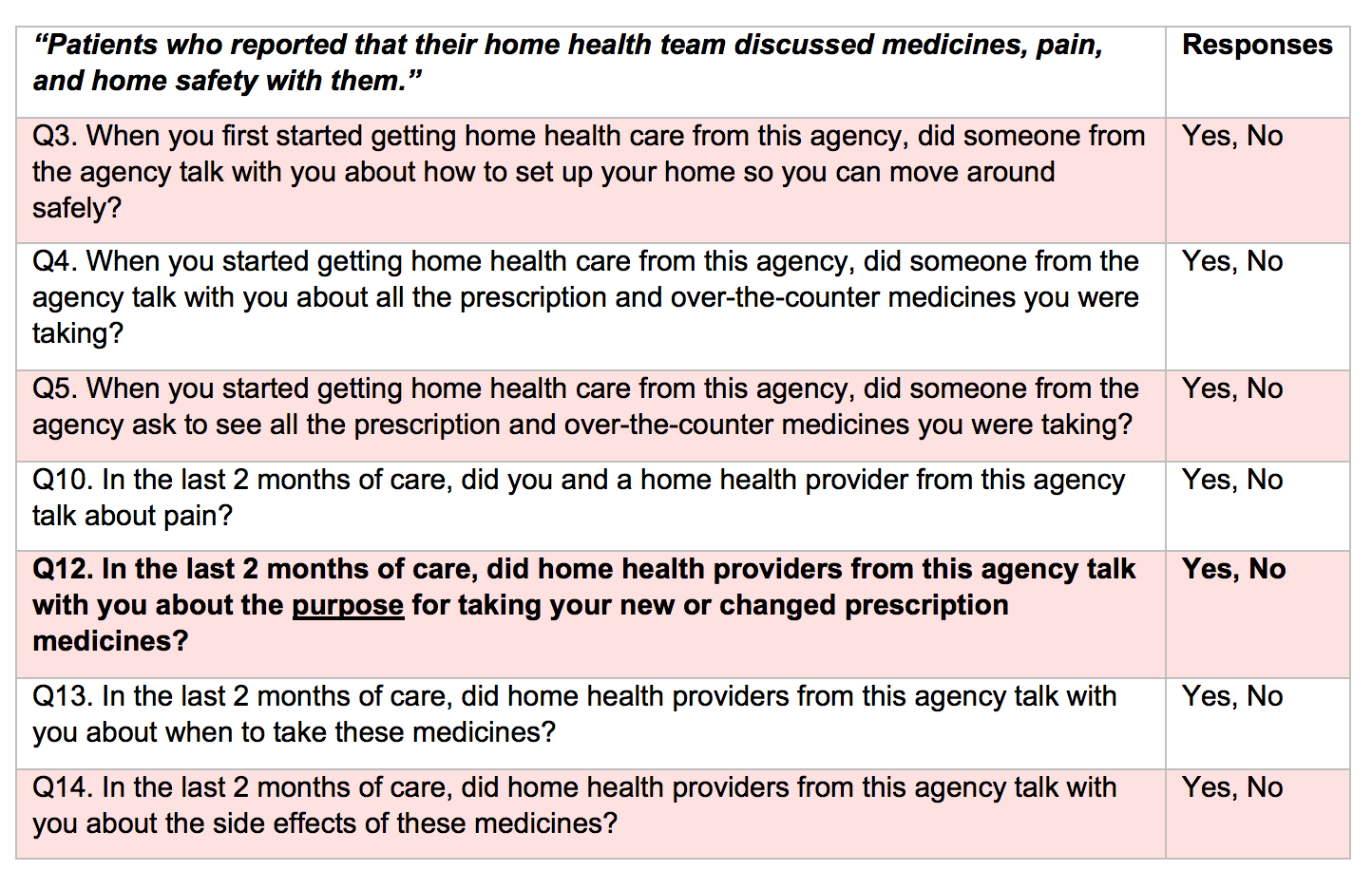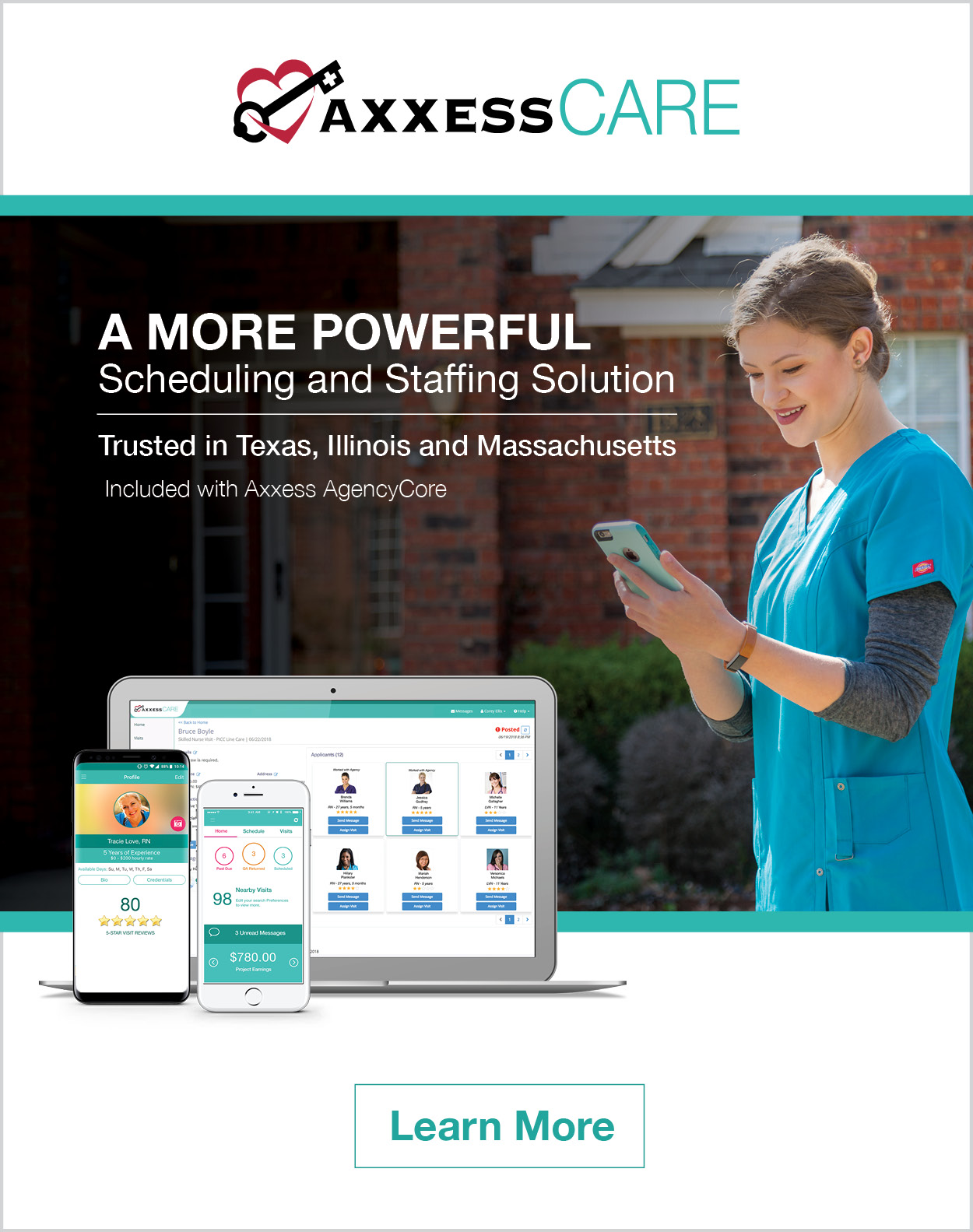
The Home Health Consumer Assessment of Healthcare Providers and Systems (HHCAHPS) patient engagement survey impacts the bottom line of home health agencies substantially, by attracting referral sources and value-based reimbursement. It is imperative for organizations to understand the HHCAHPS survey, and work on improving each measure to maximize long-term growth and sustainability.
Discussing Medication Intent– Question 12
Question 12 is one of seven questions included in the Home Health CAHPS survey Specific Care Issues domain, designed to assess how effectively healthcare providers discuss medicines, pain, and home safety with patients.
Specific Care Issues

The below examples highlight best practices to engage patients when introducing new medications:
Explaining the Purpose of New Medications
Prior to starting any new medications, home health providers should ensure patients understand what the new medication is used to treat, why adding a new medication is necessary, any potential side effects, and how introducing the new medication will benefit the course of treatment.
Example scenario: A patient has been receiving home healthcare from the same organization for several months when she begins experiencing muscle stiffness and discomfort in her hands. She informs a clinician on her home health team of these new symptoms.
Best practices: The clinician asks questions to determine possible causes and potential strategies for relief and treatment. She asks the patient about frequency, duration, and severity of symptoms, and schedules lab testing to reach a conclusive diagnosis. Since the patient reports substantial discomfort and pain levels reaching a 7 on a 1-10 scale, the provider recognizes the need to alleviate pain immediately rather than waiting for lab testing to be completed. The provider considers implementing a nonsteroidal anti-inflammatory drug (NSAID) that the patient can take to alleviate pain as needed.
When discussing treatment options, medication, and side effects with the patient, the clinician uses plain language. Instead of “a nonsteroidal anti-inflammatory medication,” she explains that the medication reduces swelling and treats pain. The Agency for Healthcare Research and Quality (AHRQ) provides a Teach-Back Guide with plain language tips and resources to elicit patient comprehension. Examples include using blood thinner instead of anticoagulant, and high blood sugar instead of hyperglycemic. The patient is encouraged to ask questions and provide input to help reach a decision on introducing new medications to the treatment plan.
Ask 3/Teach 3 Initiative
The Ask 3/Teach 3 Initiative was initially implemented by a multi-disciplinary team at Cleveland Clinic Health System to improve performance on Hospital CAHPS (HCAHPS) survey medication questions. Reported outcomes of Ask 3/Teach 3 include “a significant rise in the HCAHPS medication communication scores.”
- The program involves coaching patients/caregivers to ask the following 3 questions for each medication offered to them:
- What is the name of the medication?
- Why do I need to take it?
- What are the possible side effects of the medication?
These questions are printed on each patient’s admission folder and all staff members are expected to encourage patients to follow this process throughout care.
- Providers are trained to review 3 components using the following scripting to improve and align communication around medication delivery:
- This medication is [insert medication name].
- This medication was prescribed for [insert medication reason].
- The potential side effects of this medication are [insert side effects].
Check our blogs for the series on improving your agency’s HHCAHPS scores by systematically reviewing each of the HHCAHPS questions and sharing opportunities for improvement.

